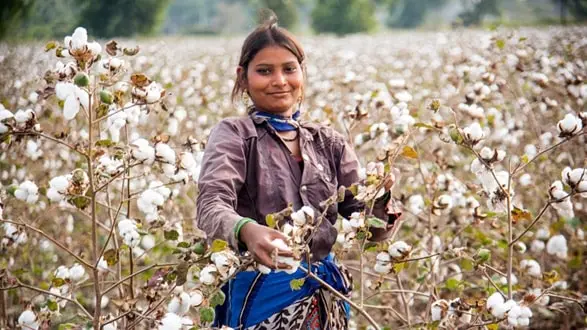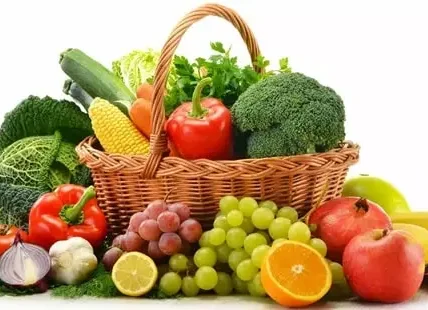The “white gold” of the world, cotton, offers a multifaceted utility, specially in the textile industry around the world. In 2025, the cotton industry thrives, thanks to the finest quality and best quantity cotton production in numerous countries. Also, the cotton farming and exporting options are widening now. Therefore, here is the top 10 list for the largest cotton producing countries in 2025 you should know about.
1. India – 6.2 Million Tons
India produces 6.2 million tons of cotton in 2024, leading the globe. Due to its diverse geography and lengthy cotton agricultural history, the country leads in this field. India produces the most cotton in the world because its farmers adopt new agricultural practices to supply local textile industries and overseas markets. In India’s varied terrain, cotton growing is customary. Years of cotton farming taught Indian farmers a lot. India can supply the global cotton market’s different needs due to its long cotton growing history and diverse climate.
2. China – 6.2 Million Tons
China produced 6.2 million tons of cotton. Cotton is booming in China owing to its agricultural and textile industries. Traditional farming and modern technology make China a major cotton producer. China’s cotton prosperity is attributed to abundant farmland. Strategic agriculture shows the nation’s textile industry dedication. China’s large-scale operations and planned blend of traditional and contemporary technologies assure productivity and sustainability. Chinese cotton farmers use precision farming, advanced equipment, and data-driven decision-making to increase output.
3. United States – 3.6 Million Tons
The US produced 3.6 million tons of cotton in 2024, third globally. American farmers use advanced technology and precise methods to ensure cotton supply. US cotton output leads the world despite market shifts. Cotton production shows US agriculture’s creativity. Modern tools help American farmers manage vast cotton fields. GPS-guided tractors and sophisticated irrigation systems boost production and show U.S. farmers’ versatility. Despite market uncertainty, American cotton producers supply most of the world. Cotton’s adaptability and manufacturing improvements make it resilient to market volatility. Efficiency and innovation keep the US a stable cotton supplier for textiles. The U.S. produces the third-most cotton worldwide. Beyond quantity, the nation’s sustainability and technology establish a worldwide cotton standard. America produces the world’s cotton and leads its future, highlighting the necessity of agricultural innovation.
4. Pakistan – 2.4 Million Tons
Pakistan produces 2.4 million tons of cotton, fourth worldwide. Textile companies depend on the nation’s diversity and cotton growers’ loyalty. Cotton production in Pakistan supports local and international textile markets, making it a global textile player. A global cotton producer, Pakistan’s diverse environment is perfect for cotton growing. Pakistani farmers flourish amid arid and lush plains. Pakistani cotton varieties are adaptable and satisfy numerous textile industry needs. Due to its dedicated farmers, Pakistan produces the most cotton. Their devotion shows in their quantity and quality of cotton, which meets global standards. Pakistan’s efforts to implement best practices, technological improvements, and sustainable agriculture methods demonstrate its commitment to being a major cotton producer.
5. Brazil – 1.4 Million Tons
Brazil produces 1.4 million tons of cotton, eighth globally. Brazilian farmers cultivate cotton effectively owing to their tropical climate and large-scale agriculture. Brazil’s agricultural importance is rising. Cotton cultivation thrives in Brazil’s tropical climate. The country’s tropical climate and extensive agricultural area promote high-yield cotton. Brazil’s climate helps farmers produce cotton for the global supply chain. Large-scale agriculture makes Brazil the fifth-largest cotton producer. Scale economies boost planting, harvesting, and processing for Brazilian plantation growers. The streamlined process boosts local textile enterprises’ cotton supplies and makes Brazil a significant worldwide raw cotton supplier.
6. Uzbekistan – 1.1 Million Tons
Uzbekistan produces sixth-most cotton, 1.1 million tons. Organic and sustainable cotton growing define the industry. Uzbekistan’s high-quality cotton helps economic growth and addresses global textile markets’ environmental concerns. Sustainable and ethical cotton production is Uzbekistan’s specialty. Sustainable cotton farming in Uzbekistan boosts yield and reduces environmental impact. Uzbekistan produces the most eco-friendly cotton owing to its sustainability. Uzbekistan’s cotton industry relies on organic farming. Uzbek cotton farmers choose organic growing over pesticides and chemicals. This dedication makes Uzbekistan a global organic agriculture leader and produces high-quality cotton. Eco- and socially conscientious consumers choose organic products.
7. Australia – 885.1 Thousand Tons
Australia produces 885,1 thousand tons of cotton, seventh worldwide. Modern irrigation and water-efficient cotton cultivation help Australian farmers withstand the arid climate. Australia’s worldwide cotton market share indicates its resilience and environmental adaptability. Australia generates the seventh-most cotton in the world, exhibiting its agricultural creativity and ability to thrive in arid locations. Large regions of arid terrain need intricate water management, therefore Australian farmers pioneered irrigation. Australian cotton producers have adapted to drought by using water-efficient practices. Precision agriculture, new seed varieties, and effective irrigation have increased yields and reduced environmental impact. These methods boost Australia’s cotton industry and demonstrate sustainable agriculture in challenging areas.
8. Turkey – 846.0 Thousand Tons
Turkey produces 846.0 thousand tons of cotton, ninth worldwide. Modern technologies and traditional farming techniques help the cotton industry grow. Turkish farmers’ agricultural skills improve textile production and affect global cotton markets. Traditional and modern farming practices work well in Turkey’s cotton industry. Turkish farmers maximize cotton yield and sustainability with this unique mix. Traditional expertise and current agricultural methods provide the country global cotton production superiority. Farmers’ wisdom drives Turkish cotton output. Turkish cotton growers are soil-savvy and follow best practices. Using old and new methods, they achieve high yields and environmental sustainability.
9. Argentina – 327.0 Thousand Tons
Argentina produces 327.0 thousand tons of cotton, ninth globally. The nation’s wide plains and temperate climate produce cotton well. Argentina’s leading cotton production is crucial to South America’s textile supply chain. Argentina is strong in agriculture because to its vast plains and perfect cotton environment. High-quality cotton thrives in the country’s broad landscapes and temperate climate. Argentine farmers meet local textile needs and play a vital role in the worldwide cotton market due to these favorable conditions. Argentina’s cotton production shows South America’s textile supply chain involvement. Cotton cultivation makes the nation a regional industrial powerhouse. Argentina’s textile industry and South America’s cotton market impact benefit from high-quality cotton.
10. Greece – 308.0 Thousand Tons
Greece rounds out the top 10 cotton producers with 308.0 thousand tons. Despite its little agricultural effect, Greece produces sustainable and organic cotton, making it stand out. Quality Greek cotton is highly for in luxury textile markets worldwide. Organic and sustainable cotton farming reflects Greece’s environmental awareness. Despite having little farmland, Greece promotes sustainable farming. Greek cotton farmers avoid synthetic chemicals and pesticides to create sustainable cotton. The quality of Greek cotton makes it famous globally. Greek cotton is utilized in premium fabrics globally for its quality. High-quality cotton production maintains Greece’s textile industry and makes the nation a global participant, satisfying premium and environmentally conscious clients. Greece’s cotton growing technology demonstrates its superiority in a smaller system. Through sustainability and quality, Greece contributes more to the global cotton market. The country’s unique position in the top 10 cotton producers illustrates how sustainable methods and high-quality cotton may promote agriculture.
Conclusion
The cotton producing countries are constantly offering the best efforts in increasing the production quantity. Although the other countries offer god quality cotton, but when it comes to quantity, then fall short. The world’s cotton supply is greatly contributed by these 10 countries. The future of the textile industry is greatly shaped with these productions.

Brandon is the cheif editor and writer at WorldUnfolds.com. With a passion for storytelling and a keen editorial eye, he crafts engaging content that captivates and enlightens readers worldwide.















